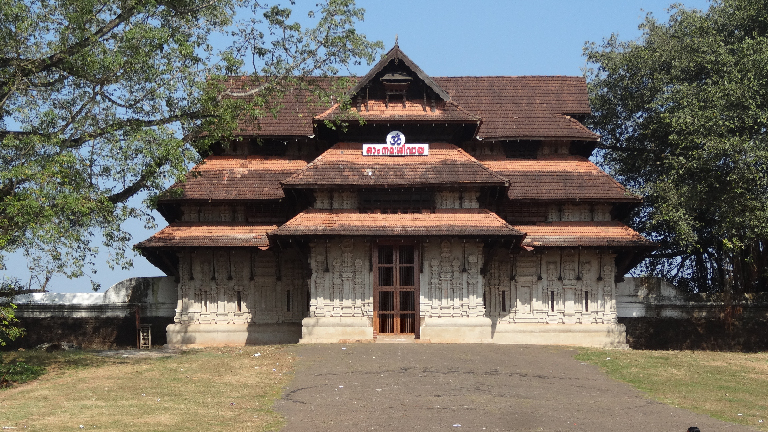
A Tale of Two Temples: Unveiling the Differences Between Tamil Nadu and Kerala
South India boasts a rich tapestry of Hindu temple architecture, but travel between neighboring states like Tamil Nadu and Kerala reveals fascinating distinctions in their places of worship. Let’s delve into the key features that set these temples apart:
Carved in Stone vs. Crafted in Wood:
Tamil Nadu: Dominated by the Dravidian architectural style, these temples are renowned for their towering gopurams (gateway towers) and intricate carvings on granite and sandstone. Think of the majestic Meenakshi Temple in Madurai or the Brihadisvara Temple in Thanjavur.
Kerala: Wood takes center stage here. The abundance of forests in Kerala led to the development of a distinct style with sloping roofs, designed to withstand heavy monsoon rains. The Krishnan Kutty Temple and Vadakkumnathan Temple are beautiful examples.
Size and Scale:
Tamil Nadu: Temples here are often grand complexes, sprawling over vast areas. These architectural marvels feature multiple halls, shrines, and towering gopurams that compete with the sky.
Kerala: Kerala temples tend to be smaller in scale, with a simpler and more intimate feel. They prioritize a harmonious blend with the surrounding nature.
Deities and Traditions:
Tamil Nadu: While a multitude of deities are worshipped, there’s a strong focus on Shiva, Vishnu, and Shakti in various forms. Rituals can be quite elaborate, with a rich tradition of music and dance performances within the temple complex.
Kerala: Kerala displays a wider range of deities, including Ayyappan and Bhagavathy. Temples here are known for their unique rituals, some of which may seem unconventional to outsiders. For instance, the Sabarimala Temple in Kerala has specific restrictions on who can enter the inner sanctum.
A Touch of Fusion:
It’s important to note that there’s some overlap, especially in the southernmost part of Kerala. Temples like the Padmanabhaswamy Temple in Thiruvananthapuram showcase a fusion of Dravidian and Keralan styles.
Beyond the Differences:
Despite their architectural and ritualistic variations, Tamil Nadu and Kerala temples share a profound spiritual core. They serve as centers of community life, fostering devotion, cultural expression, and a deep connection to the divine.
So, the next time you visit South India, keep an eye out for these architectural and cultural distinctions. Whether you’re marveling at the towering stone giants of Tamil Nadu or appreciating the intricate woodwork of Kerala, you’re sure to be captivated by the unique soul of each temple.


